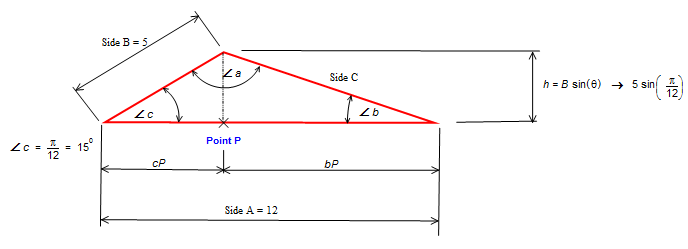A triangle has sides A, B, and C. Sides A and B are of lengths #12# and #5#, respectively, and the angle between A and B is #pi/12#. What is the length of side C?
2 Answers
Explanation:
We use Cosine-rule for the given triangle & get
I have taken you to the point where all you have to do is 'plug' the values into a calculator.
Explanation:
Always a good start to draw a diagram or sketch.

Objective: determine
'............................................
Step 1:
Step 2:
Step 3:
Step 4:
To reduce accumulated rounding error it is better do the calculation only at the end.
'~~~~~~~~~~~~~~~~~~~~~~~~~~~~~~~~~~~~~~~
Step 1:
'~~~~~~~~~~~~~~~~~~~~~~~~~~~~~~~~~
Step 2:
'~~~~~~~~~~~~~~~~~~~~~~~~~~~~~~~~~~~~~~~~
Step 3:
'~~~~~~~~~~~~~~~~~~~~~~~~~~~~~~~~~~~~~~~~~~~~~~~~~~~~
Step 4:
Arctan returns angle that made that made the tangent value
So if

